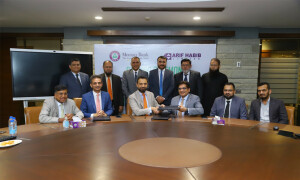Mobile phones in Pakistan will soon have three digit code along with eight digits number to accommodate rapidly increasing number of users, it is learnt. A source said that the Pakistan Telecommunication Authority (PTA) had floated a proposal to accommodate the rapidly growing number of users.
Which was endorsed by all the stakeholders, and now the authority is finalising modalities to implement the plan. The regulator believes that the present numbering would hardly meet the user demands for some years and the authority is in the process of reviewing National Numbering Plan.
The existing numbering system has capacity to accommodate 8 million users under one code. The new system would enhance the capacity to 100 million, thus it would provide more space to the cellular companies under single code.
The PTA had started consulting the industry for early implementation of the plan because the telecommunication services have to be provided to 95 percent of the population under universal service obligation. The existing capacity is not sufficient to meet the target.
Pakistan needs to provide telecom services to 90 percent of the population by 2015. At least one service, landline, WLL or mobile is available presently in 337 tehsils out of a total of 348, which have to be catered. Covering all tehsil headquarters is only the first step towards reaching rural areas wherein many places lack capacity. So even if a subscriber requests service, his demand may not immediately be satisfied.
The regulator also expects manifold growth in the telecom sector and the existing numbering plan would become short of capacity in a couple of years. The numbering plan needs to be revised to accommodate the expected growth.
A consultation paper of the PTA on migration of numbering from seven to eight digits for mobile and fixed line services was necessitated because the telecom sector is undergoing transformation from circuit switching to packet switching.
New technologies promise cost-effective rollout solutions leading the way to cheaper options for the end user, providing an edge to operators to launch the services with comparatively small CAPEX and lower operational costs.
The proposed new numbering plan will make the dialing plan more customer-friendly ie one access code for one operator and to build the capacity for next ten years and more both for the mobile and fixed line markets, enhance numbering plan capacity to create enabling environment for new, local loop licensees.
BR100
12,172
Increased By
445.9 (3.8%)
BR30
37,855
Increased By
1478.7 (4.06%)
KSE100
113,428
Increased By
3914.9 (3.57%)
KSE30
35,862
Increased By
1348.9 (3.91%)

























Comments
Comments are closed.